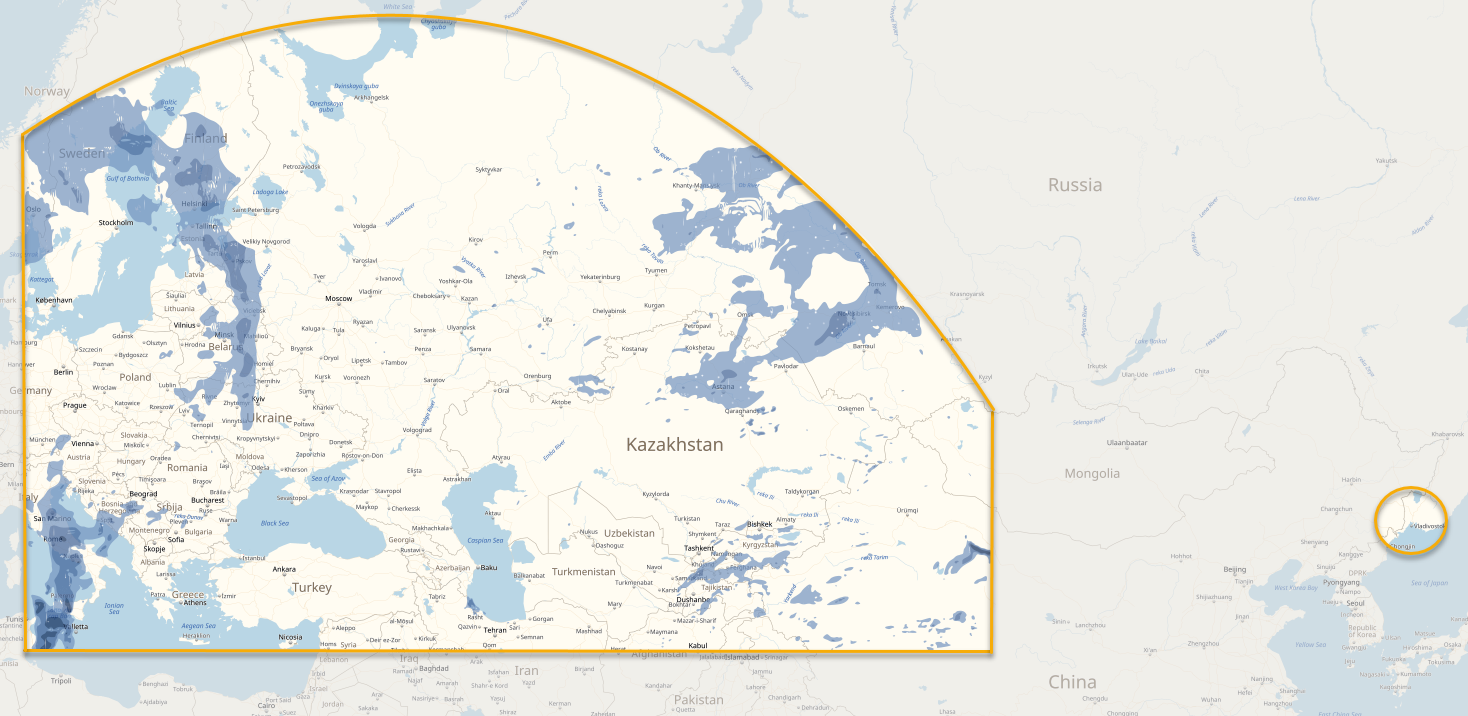Precipitation map
What is a precipitation map
Precipitation map shows areas where it's raining or snowing right now accurate to a building, and how these areas will change in the next two hours. You can use this map to find out if it is going to snow today and when it is best to leave the house without getting caught in the rain.
Separate icons on the map show the areas where lightning is registered. This information comes from lightning detectors.
| Full coverage | Partial coverage |
|---|---|
|
|
| Full coverage | Partial coverage |
|---|---|
|
|

How the precipitation map is made
Yandex Weather makes a precipitation forecast based on the data received from weather radars and satellites. Data from weather stations is not suitable for this, as it is updated not often enough and is not always accurate: stations cover the areas unevenly and are located at a great distance from each other.
- Stage 1. Getting data from weather radars and satellites
-
Weather radars make a 3D image of the atmosphere within a radius of 200-250 km every 10 minutes.
A satellite registers the position of clouds over Europe and part of Asia every 15 minutes.
- Stage 2. Image processing
- The radar and satellite images are uploaded in two convolutional neural networks. Both networks predict precipitation independently:
- They analyze the sequence of images and compare them with the weather forecast made using the Meteum technology.
- They forecast where precipitation areas will move and how their shape will change.
- They make precipitation maps for the next two hours.
- Stage 3. Making the final forecast
-
The service combines the maps received from the neural networks and displays the final forecast on the weather map layer.
How often data is updated
The data on the map is updated every 10 minutes (as soon as the service receives information from the radars).
How to use the map
To open the precipitation map:
On the Yandex Weather home page , open the Weather map tab.
In the top left corner of the map, click Precipitation.
- View the forecast for the next few hours: move the slider at the bottom of the page or select the time on the timeline.
- Find out the type of clouds and the intensity of precipitation 2 hr before and 2 hr after the current moment: select the required time on the timeline.
- See the places where lightning is registered: enable the Lightning option in the bottom right corner of the page.
Places where lightning is registered are marked on the map with the  icon. Information about lightning comes not from radars or satellites, but from lightning detectors. That's why the lightning icons are displayed even in those places on the map which are not covered by a network of radars and whose pictures are not taken by the satellite.
icon. Information about lightning comes not from radars or satellites, but from lightning detectors. That's why the lightning icons are displayed even in those places on the map which are not covered by a network of radars and whose pictures are not taken by the satellite.
To switch to a different weather map, use the switch in the upper-left corner of the map.
Precipitation is not displayed correctly on the map
The precipitation map is based on the data received from weather radars which measure the strength of the radio signal. It depends on how many water drops are contained in the air. Sometimes the radar may take for precipitation low clouds or drops that do not reach the surface of the Earth.
A large precipitation front may significantly weaken the strength of the weather radar's signal. The signal is also occasionally distorted by radio frequency interference. In these cases, the precipitation map may be incorrect: it may show areas of precipitation where there is actually no precipitation.
For regions with no weather radars, the forecast is based on satellite data. The satellite may fail to register short-term precipitation of up to 7 minutes.
The precipitation map is not displayed
Possible cause:
- There are no weather radars in your region.
- Your region is outside the satellite's image-capturing zone.
- There was a technical problem with the satellite's receiving station or with data receipt and processing. In this case, you will see “The data is temporarily unavailable” message.